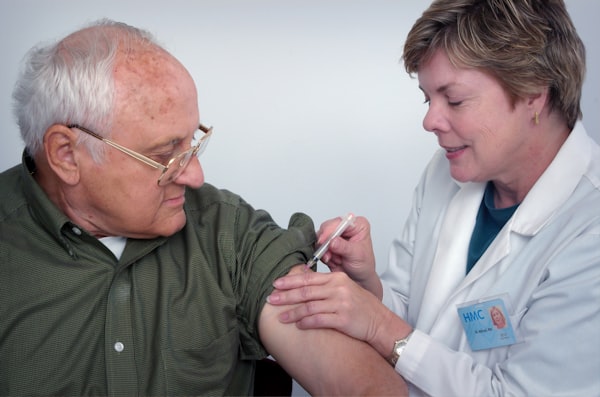Making Memories, Not Enemies, With Your Loved One With Dementia
Learn how to connect with and engage a loved one with dementia. Tips include using familiar objects, redirecting attention, and seeking professional support

When dad went into a memory care facility more than two years ago, the person who was the executive director of the community at that time told me this:
“With dementia, you lose your parent twice. You lose them when their mind goes, and then you physically lose them when they die.”
It sounded cliché, in a way, but I knew she was being truthful and sincere.
Today, dad hangs on to his mind by a rope that is growing thinner every day. Here it is Labor Day weekend. Dad, a proud John Deere retiree and UAW member, has the best benefits anywhere. Thank God for organized labor. Without it this would be so much worse for my dad and our family.
When faced with the horror of watching our loved ones succumb to dementia-related diseases, in dad’s case behavioral-variant frontotemporal dementia (also known as BvFTD or Pick’s Disease), it’s important to make the most of every single moment you have together.
You want to make memories, not enemies, with your loved one.
On Saturday I had the pleasure of interviewing Scott Silknitter, author of the downloadable book, “Activities 101 for the Family Caregiver – Frontal Temporal Dementia: How to Engage.” Silknitter and colleagues already have authored other books in the “Activities 101” series that offer actionable information about engaging loved ones afflicted with vascular dementia, Huntington’s, Parkinson’s, Lewy Body Dementia and stroke.
This is important stuff. Federal law mandates that facilities receiving government money must offer activities that are appropriate for each resident. In other words, you can’t just let them sit there and die. Uncle Sam says they must be engaged. You can read all about the law, F-tag 248, by clicking on this article from the journal Long-term Living.
Scott Silknitter’s story: Tired of his dad just staring out the window
Silknitter decided to write the books after finding himself in the same position I’m in today. “My father sat and stared out of a window; we had no idea how to engage him, how to give him some joy.”
Silknitter’s dad had Parkinson’s. My dad also stares into space at times, but he also is incredibly agitated at times. The hallmark of BvFTD is not memory loss, but outrageous behaviors.
When I arrived at dad’s nursing home on Wednesday (he moved from memory care/assisted living a few weeks ago, as he now requires a much higher level of care) I heard him screaming from his room the second I got off the elevator.
That’s not anything new. It happened at the last place, too. I could tell by the smell coming from the room that he had had an accident and they likely were in there changing him. Unfortunately my dad, and many others with dementia-induced behaviors, often don’t want to be touched.
Out came one nurse. Then two. Then three.
They handled it beautifully and never hollered back at him. When I went into the room, the tantrum was over. I put his John Deere cap on him and he smiled. Asking him to pick out a hat from his hat rack I have learned is a great way to redirect him and make him smile, at least most of the time. The hat rack was my brother’s idea.
More on Making Memories, Not Enemies, With Your Loved One With Dementia …
Silknitter for years worked in the air pollution control business. He went to factories like John Deere Harvester Works in East Moline, Ill., where my dad built combines, and tried to make them safer for employees. Coincidentally, I wrote this piece last year for Healthline News about research coming out of Harvard that showed a link between exposure to workplace solvents and dementia at a French utility company.
Today, Silknitter operates ROS Therapy Systems. ROS trains caregivers for people with dementia – be it independent family members or entire staffs of care facilities – to handle outrageous behaviors and help their loved ones/residents/patients get the most out of life.
ROS even has worked with A Place for Mom, an assisted living facility referral service. Joan Lunden is the spokeswoman of A Place for Mom and I had the pleasure of interviewing her last year for this Healthline News piece. I later met her when she visited my community, and it is Joan Lunden who inspired me to begin working as an elder advocate, one of the many hats I wear as a freelance writer.
Silknitter also trains caregivers for Visiting Angels. Ironically I had the pleasure of writing a feature on the Pine Belt, Miss. Visiting Angels this week for one of my clients.
Labor Day weekend at Uncle Ted’s house: Might that get dad smiling?

This weekend is when the former MDA Jerry Lewis Telethon was held each year. As a child, my family would go to my Uncle Teddy’s house on this weekend. Uncle Teddy was an East Moline alderman and had a swimming pool at his house. My best family memories from when I was a kid were at Uncle Ted’s.
On Labor Day, we would go to Uncle Ted’s and swim in his pool. Every year, Jim King, a legendary television newsman in my town, would host the telethon. Toward the end, he’d say, “Ladies and gentlemen, I’d like to bring out Edna Heitz…” and out would come grandma, who volunteered at the telethon. She would beam (she loved the spotlight…it runs in the family) as we all would gather around the television and cheer for grandma.
One Labor Day my mentally disabled aunt got on my cousin Todd’s drum set and start banging away. All the cousins got up and started dancing. I actually have Super 8 video of this that was burnt onto DVD.
So today I’m going to visit dad and try to start a conversation about it being Labor Day. Maybe he will recall all of these great memories.
Plus, he thinks I’m Uncle Ted about half the time. He always asks, “Where’s mother? Where’s father?” and sometimes calls me “Ray” (uncle Ted’s real name) or “Ted.” The other half of the time he knows I’m his son David. It was a relief a few days ago when I walked in and he saw me, and originally called out “David!”
Last year, one of the CNAs at dad’s last facility became pregnant. The CNA bears a striking resemblance to my long deceased mother when she was that age. When this CNA became pregnant, dad very seriously thought it was his child.
It was very, very awkward. I would go to visit and dad would say, “I banged on Barbara’s door all night, she wouldn’t answer the God damned door!” Barbara was my mother’s name.
Silknitter’s book points out that people with dementia often think they are at a different time in their lives than they actually are. You have to meet them were they are in that time of their life in their mind.
“In your dad’s world his wife was pregnant, she wasn’t coming home at night, and he didn’t know where she was,” Silknitter explained. He suggested I get talking about things he enjoyed, like his job at John Deere. His books offers tips on how to do just that without starting off with “Do you remember?” which is a no-no.
The best thing about Silknitter’s book is that it’s a breezy read. You can get through it an hour, and it’s very, very easy to comprehend.
“My experts all want to sound very clinical and very professional, so I took their stuff and mixed it up in a way that my 70-year-old mother could understand it,” he said. “In today’s world, we have multiple generations living together. There may be a fifth grader who doesn’t understand why grandma may not be able to smile. You can explain, ‘She loves you, the muscles in her mouth just don’t move. It’s why she reaches out and touches you and pats you.’”
Meet David Heitz
What Does it Mean When a Person With Dementia Goes on Hospice
Oprah Happiness Guru Shawn Anchor on Staying Positive
Mother Son Team Shine Light On Rare Form Of Dementia





